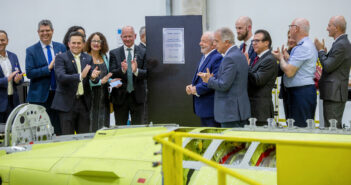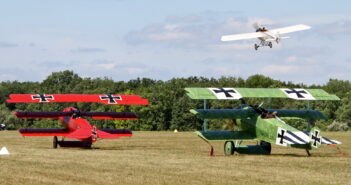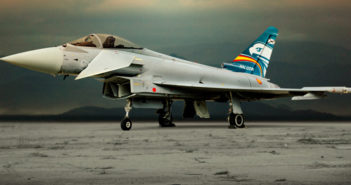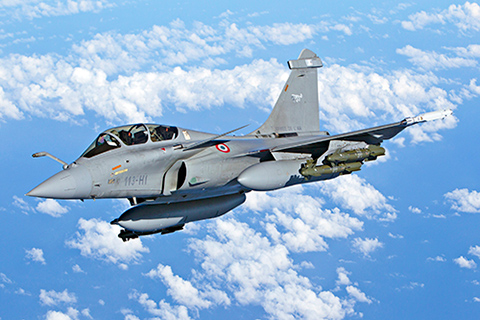
The Rafale is today the only modern fighter plane designed in Europe to be fully combat proven in all types of mission, from reconnaissance to deep penetration stand-off assault (with the AASM SBU-38 guided rocket bomb), not to forget air superiority. © Armée de l’Air
After a long decade of moderate if not sedate trade export activity, averaging between €5 and €6 billion annually, the year 2015 has brought forward a sudden and repeated favorable sales outcome for the French defense aerospace industry and particularly for Dassault Aviation and its iconic Rafale fighter plane which has beyond doubt pushed out of the limelight all other world players. In a mere three months, eighty-four Rafales have been firmly sold on the export market. First to Egypt with 24 aircraft last February, followed in early April by 36 to India — this country acquiring three dozens Rafales in a thunderbolt deal intended to fulfill an Indian Air Force urgent operational requirement — and again with 24 for Qatar in a contract signed in Doha on last 4 May, including 12 more aircraft in option. While further Rafale sales to India are still expected along the lines of a trade agreement that should see, by the start of next decade, the aircraft produced by Hindustan Aircraft Limited under a wide technology transfer accord, the sun is definitely rising on France’s commanding “omni-role” fighter plane which is also a pilot’s dream for all those who have flown this aircraft in operation.
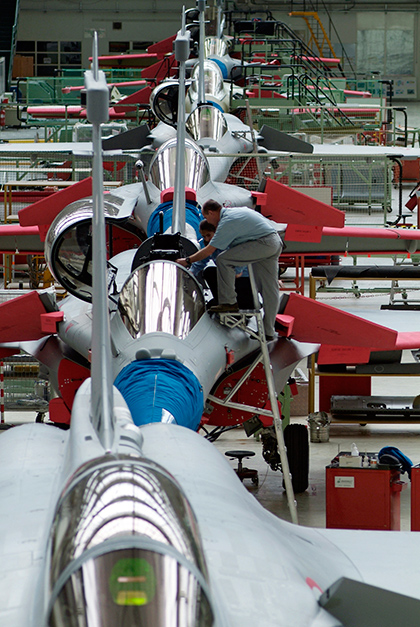
Over 300 Rafales have been ordered so far from France and the recent export contracts will mean that a necessary ramp up in aircraft production — from the current 11 per year to 22 or more — should take place rapidly, meaning that all subcontractors involved are now engaged in a war against time to meet the delivery deadline ! © Dassault Aviation
Never two without three
Quite interesting is to point that these export sales have all been secured with air arms already flying the Dassault Mirage 2000, a fighter plane which 30 years ago was the only non-U.S. jet to use a fully advanced « fly-by wire » control system. India and Egypt being what they are, leading political nations in Asia and Africa, it makes absolutely no doubt that the Rafale is now only at the beginning of its export career. More countries will follow over the years to come. And principally with nations not willing to buy either from the United States or Russia or even China.
If much of Dassault Aviaton’s export success is linked to the attribute that the Rafale is today a battle proven aircraft with outstanding combat capabilities — something demonstrated both in the French Air Force and in France’s Aéronavale services —, needless to say that there always exists a « man in the loop » when dealing with such a far-reaching subject than selling to foreign countries first line and hi-tech critical weapons. What’s more against very strong international competition and athwart political lobbying. For France, the man in the loop is in fact a tandem, one made by president François Hollande and his close councelor Jean-Yves Le Drian, France’s hard working minister of Defence. The men’s relentless and wary team endeavour to promote the Rafale on the export market has finally paid off after three years of diplomatic toil, providing in the process much welcome oxygen to France’s high valued defence industry. Particularly in a country which has witnessed over the past two decades, thanks to the European Union’s fatuous policy and remiss national politicians, the destruction of millions of manufacturing jobs.
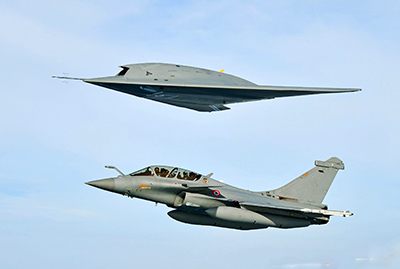
During the next decade, French Air Force Rafales will be able to work in combination with unmanned attack drones (UCAV) such as the unique nEUROn demonstrator which has allowed Dassault Aviation and its European partners to muster highly advanced knowledge in stealthiness and automation techniques. © Dassault Aviation
A 300 Rafale fighters production
To date, the combined purchases of France, Egypt, India and Qatar mean that the 200 Rafale production mark is now looming in the distance for the multirole and potent fighter plane. France’s latest procurement law having reduced the number of Rafales which should by 2025 equip the French Air Force and the French Navy (225 in total instead of the 320 aircraft expected initially back in 1992), a grand total of over 300 Rafales has now been ordered, including export ; and even more if we include options. A very positive result for Dassault Aviation and a true success for the French industry with Thales, Safran (Snecma and Sagem) and MBDA united in the “Rafale Team” along with Dassault. As a matter of fact, along the lines of the latest Rafale F3R standard, production of AESA radars and SPECTRA EW suites, M88 turbofans, AASM rocket-bombs, plus Mica and Meteor air-to-air missiles are expected to boom until 2025 at least, with a likely ramp up in Rafale production to reach three aircraft per month, as customers like Egypt and India are obviously in a hurry.
The first three first Rafales for Egypt are to be delivered next July. And the initial deliveries to India should take place next year. Qatar will have to wait until mid-2018 to receive its first Rafales. Already Egyptian and Indian aviators have arrived in Saint Dizier (Base Aérienne 113) and Mont-de-Marsan (Base Aérienne 118) for training on the French jet and its advanced systems.
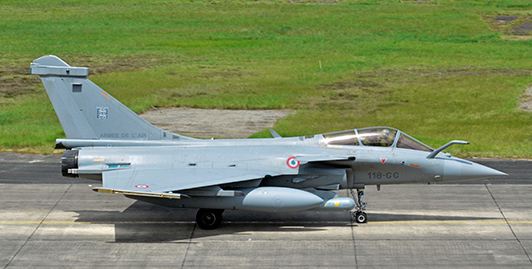
A Rafale C of Régiment de Chasse 2/30 ‘Normandie-Niémen” pictured during the recent national air exercise VOLFA 15-2. The French Air Force Rafale fleet has recently been retrofitted with updated EW systems and new radios. Complementing the Thales Spectra multi-spectral threat 360 degrees warning system against hostile radars, missiles and lasers, the new DDM-NG ‘eye” can be spotted on top of the fin, as is the dorsal blade antenna of the new V/UHF suite doubling the original UHF set for air-to-ground communications. The largest new sensor onboard the Rafale is the Thales Active Electronically Scanned Array AESA RBE2 radar located behind the nose cone. The new radar provides the Rafale with a capability to track all targets in the radar field of view, irrespective of the relative location between targets and host aircraft. © J.-M. Guhl

